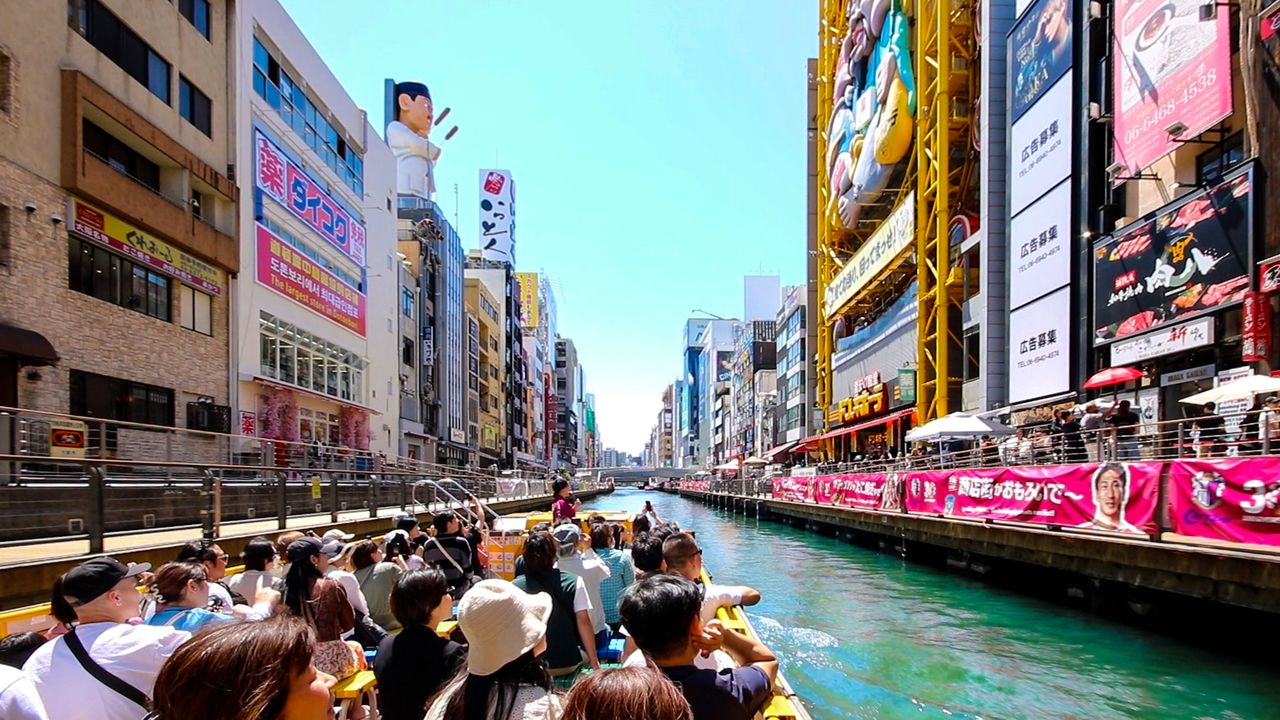
Osaka from a New Angle: Canal Cruises a Hit with Inbound Tourists
Guideto Japan
Travel Culture- English
- 日本語
- 简体字
- 繁體字
- Français
- Español
- العربية
- Русский
In Search of Food and Photo Ops
West Japan’s largest metropolis, Osaka, was densely crisscrossed with a network of canals in the Edo period (1603–1868), delivering foodstuffs from across the country and earning it the nickname “Japan’s Kitchen.” Once the main arteries of the city’s trade, most of the canals have since been filled in. Today, all that remains is Higashi-Yokobori River, from the late sixteenth century, and the Dōtonbori River, completed in 1615. Higashi-Yokobori traverses the city north-south for roughly 3 kilometers before turning west downstream, to form Dōtonbori, which continues a further 2.7 kilometers.

Dōtonbori Shōtengai is the district’s main shopping drag. (© Nippon.com)
The Dōtonbori area, extending south from the top of the Dōtonbori channel, is one of Japan’s leading shopping districts. Osaka Prefecture is now a tourist hotspot, forecasted to attract a record 14 million visitors from overseas in 2024.
A key tourism draw is Osaka’s soul food. Posting a photo of yourself tasting takoyaki alongside Dōtonbori is proof that you “did” Osaka. Tourists go gaga at the myriad of eye-catching restaurant signs.
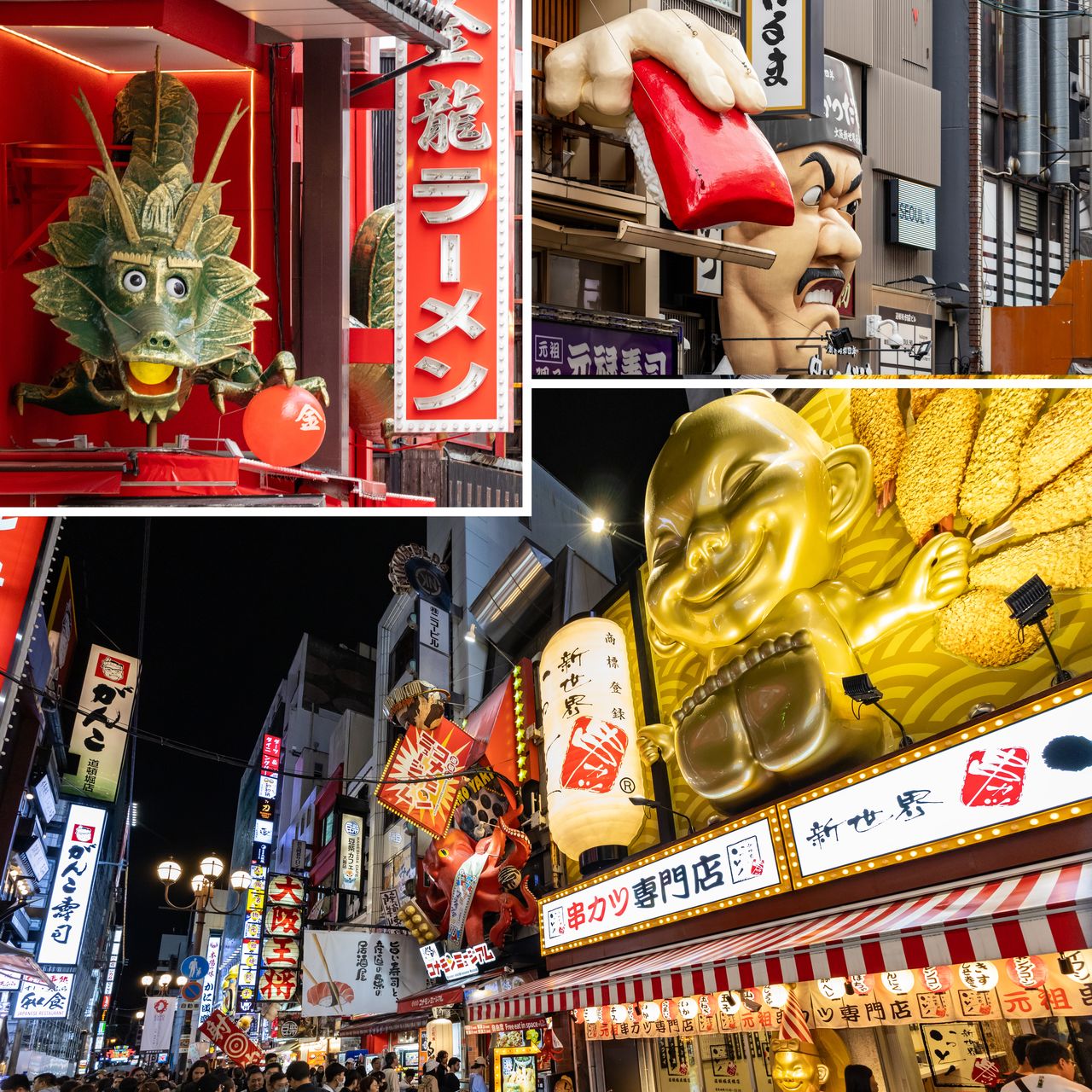
Restaurant signs compete to catch the attention of passersby. (© Nippon.com)
The top photo spot is Ebisu Bridge, where visitors jostle to capture the perfect shot of the “Glico Man” billboard above the canal. It was once infamous as a place for picking up girls, but is now packed with tourists both day and night.

The signboard lights up 30 minutes after sunset. Visitors imitate the famous “Glico pose”: running with hands raised in victory. (© Nippon.com)
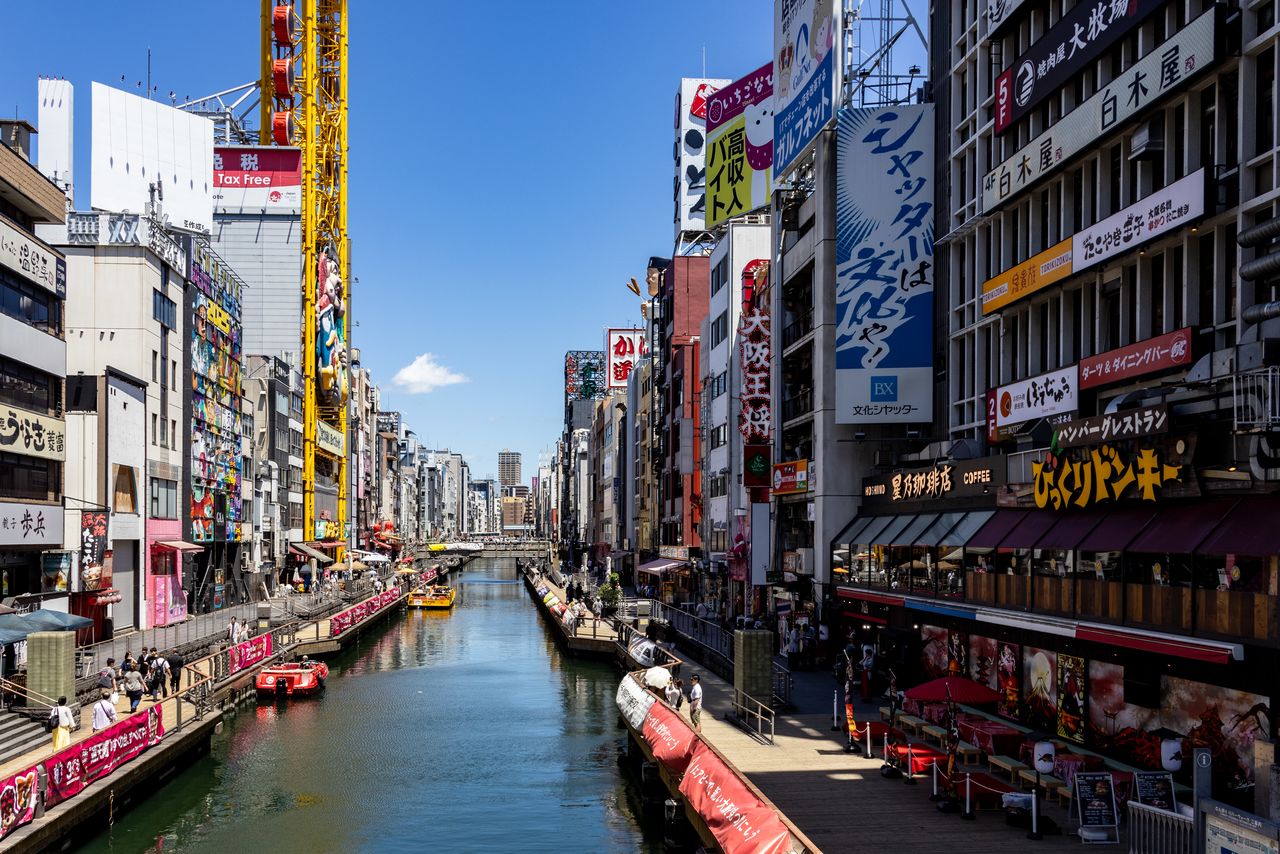
Dōtonbori is lined with takoyaki stands, specializing in the piping hot octopus dough balls, and open-air cafés. (© Nippon.com)
Good-Humored Canal Cruise with an Osakan Flavor
Tonbori Riverwalk is the pedestrian strip that extends along both sides of Dōtonbori east and west of Ebisu Bridge. The giant Ferris wheel soaring above the discount store Don Quijote is particularly striking. The Tonbori River Cruise departs at 30 minutes intervals from just below the Ferris wheel.
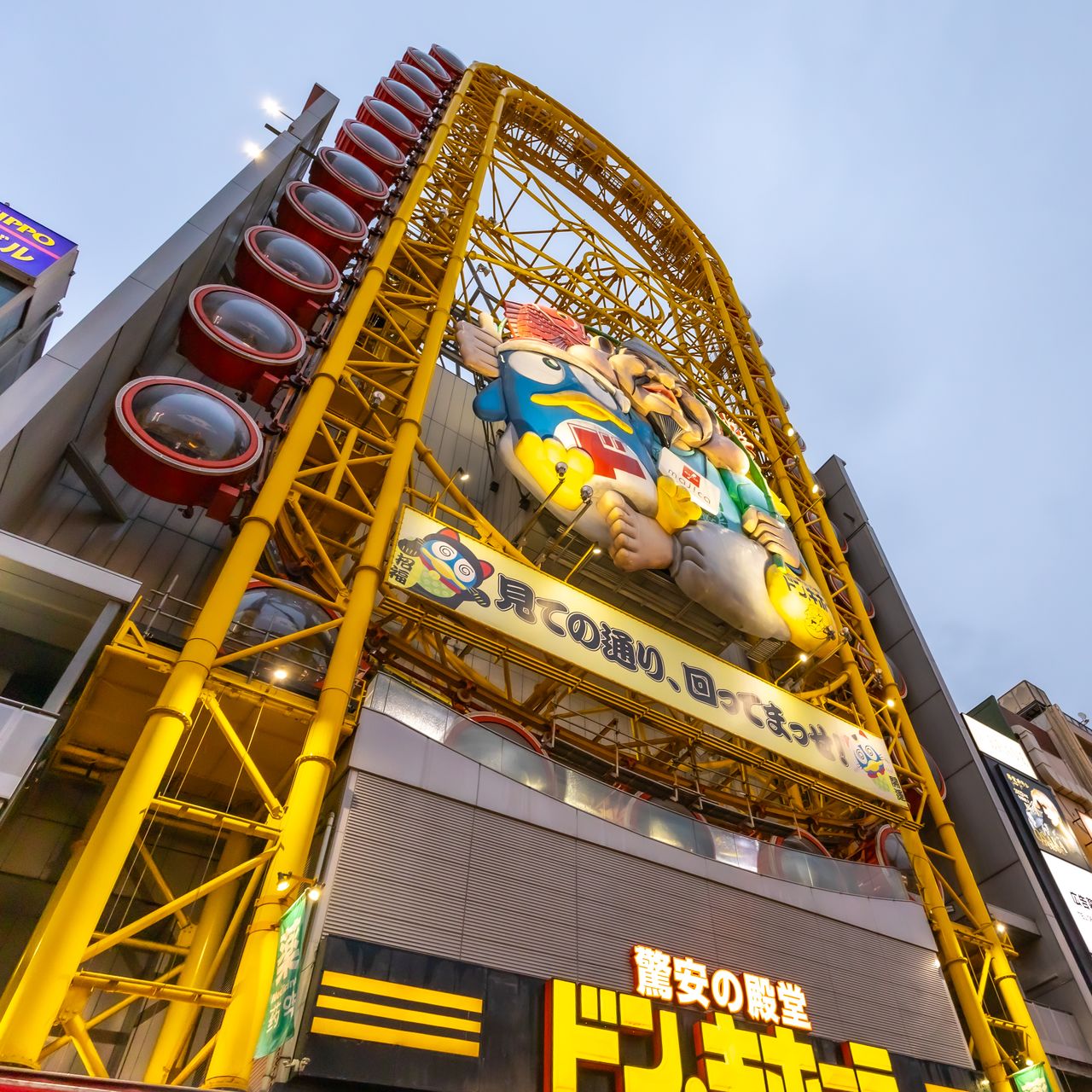
The Tazaemon-bashi pier, boarding point for the Tonbori River Cruise, is easy to find: Just look for the bright yellow Ferris wheel. (© Nippon.com)
The 20-minute cruise gives a unique perspective of the busy shopping district. Departure times have been increased due to popularity. Around half of the passengers are tourists from Korea, Taiwan, Hong Kong, the United States, and other countries. The Osaka Amazing Pass can also be used on the cruise.
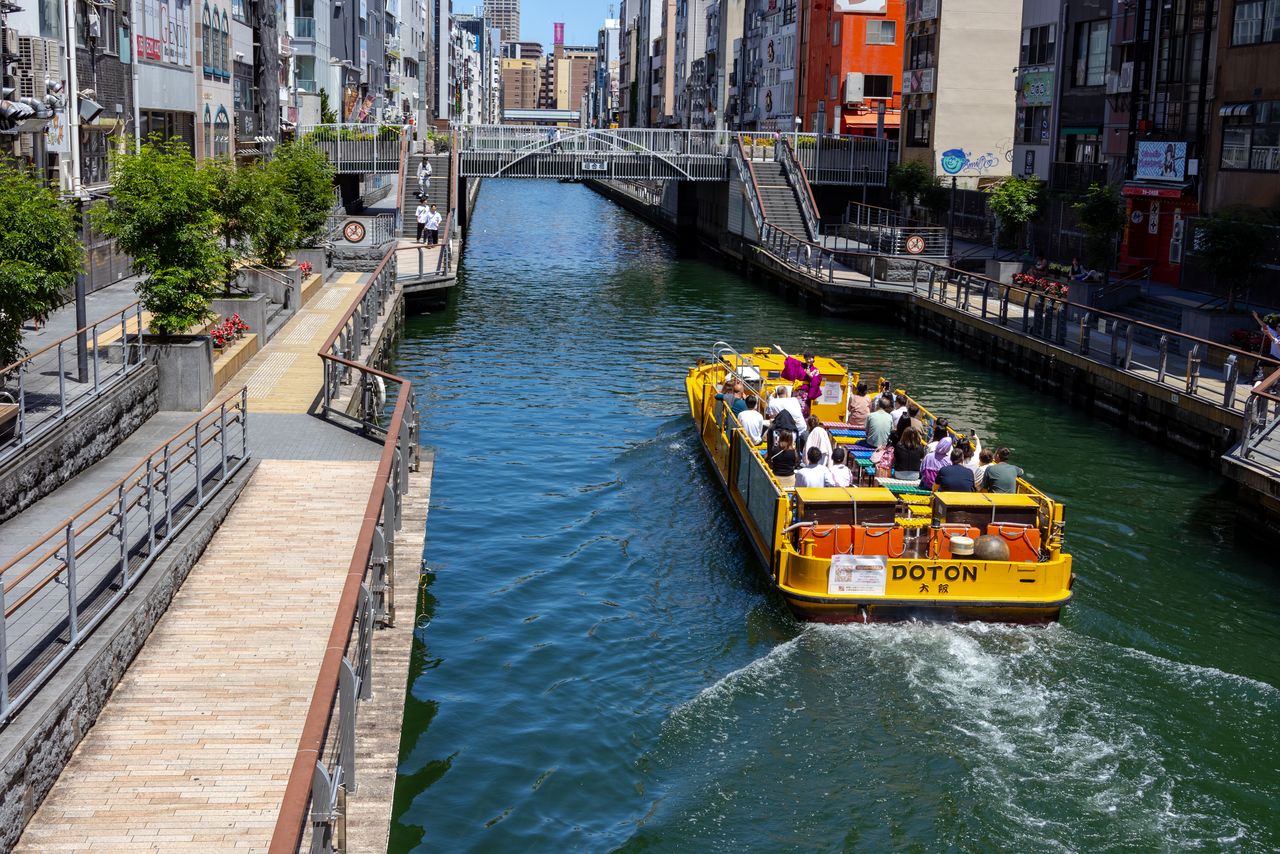
The cruise does a loop along a roughly one-kilometer stretch between the Nippon-bashi and Ukiniwa-bashi bridges. (© Nippon.com)
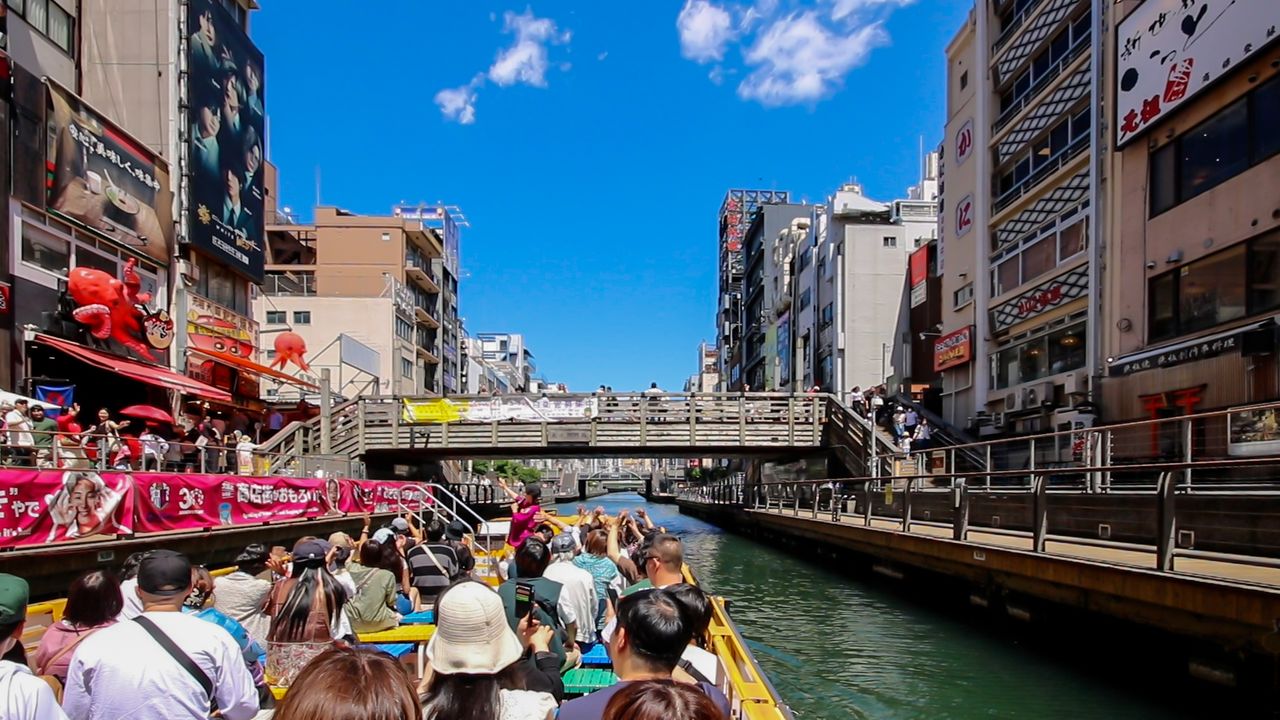
It’s fun to travel so close to the canal side. The cruise passes under bridges so low you could touch them. (© Nippon.com)
During the cruise, a guide entertains passengers in a thick Osaka dialect. “The sign over there reads ōkini, which is Osakan for thank you—or kamsahamnida in Korean, or xie xie in Chinese. Try to use it whenever you can.” The guide highlights how friendly the locals are, and sure enough, passersby wave, and storekeepers call out “Come visit us later” to the passengers.
The guide introduces nine bridges that the boat passes under. “Ebisu Bridge is rounded to resemble okonomiyaki,” the savory pancakelike dish that is another of Osaka’s signature offerings. “The railing and steps are decorated with motifs of spatulas, just like the ones used for okonomiyaki.”
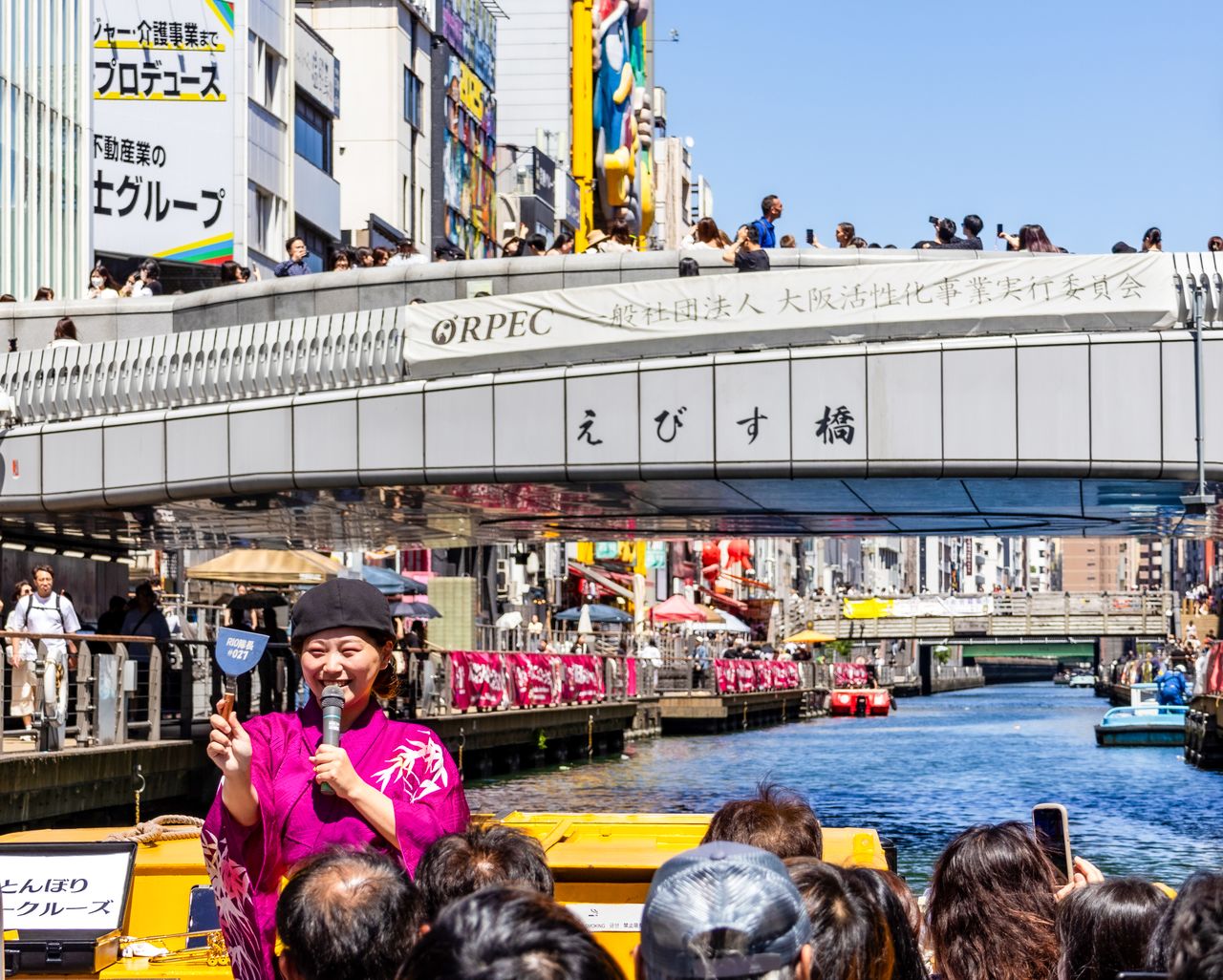
The bridge railing resembles an endless row of spatulas. (© Nippon.com)
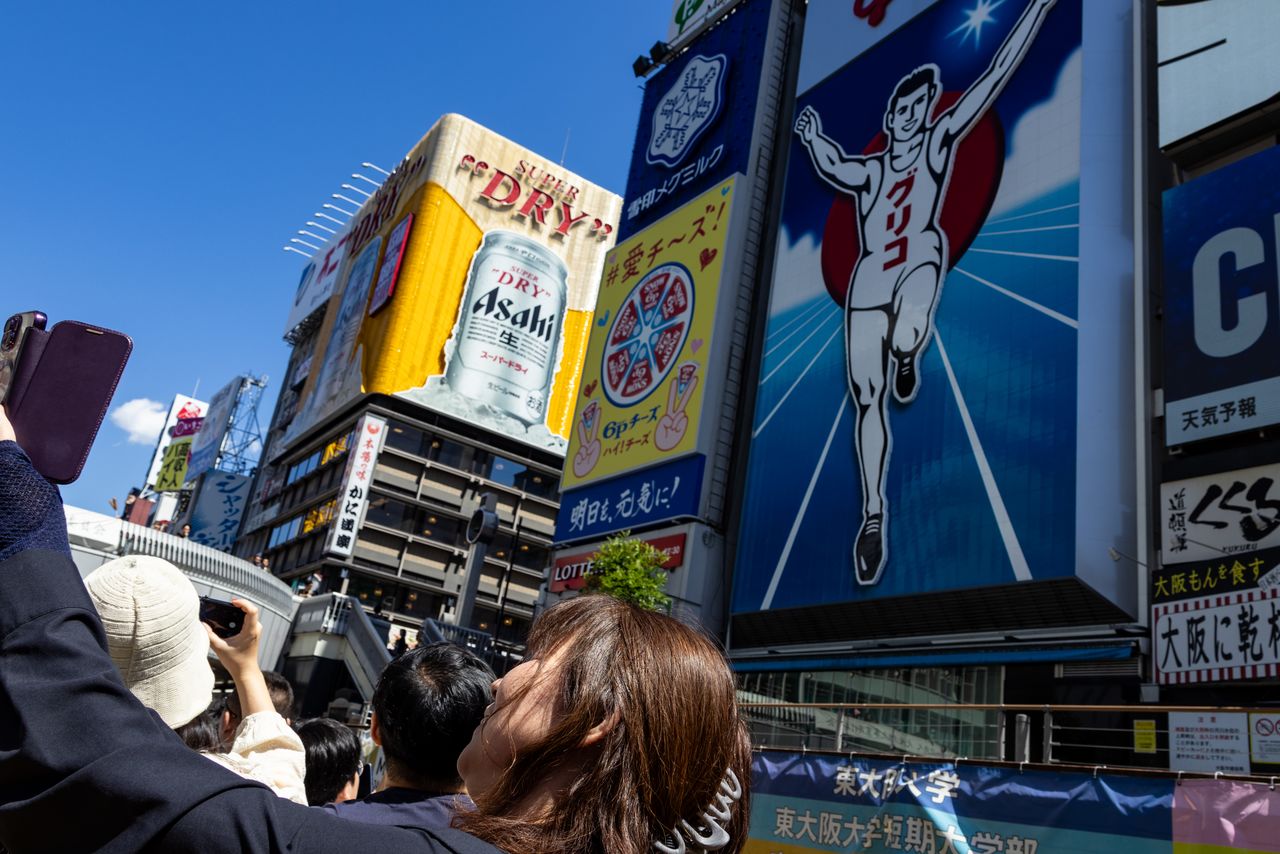
Anticipation grows as the cruise nears the Glico sign, where it pauses for photos. (© Nippon.com)
The cruise is popular at nighttime, when the contrast of the darkness under the bridges with the dazzling lights is breathtaking.
After the cruise, everyone has a smile on their face. A Korean tourist boasted that her photos would make friends green with envy.
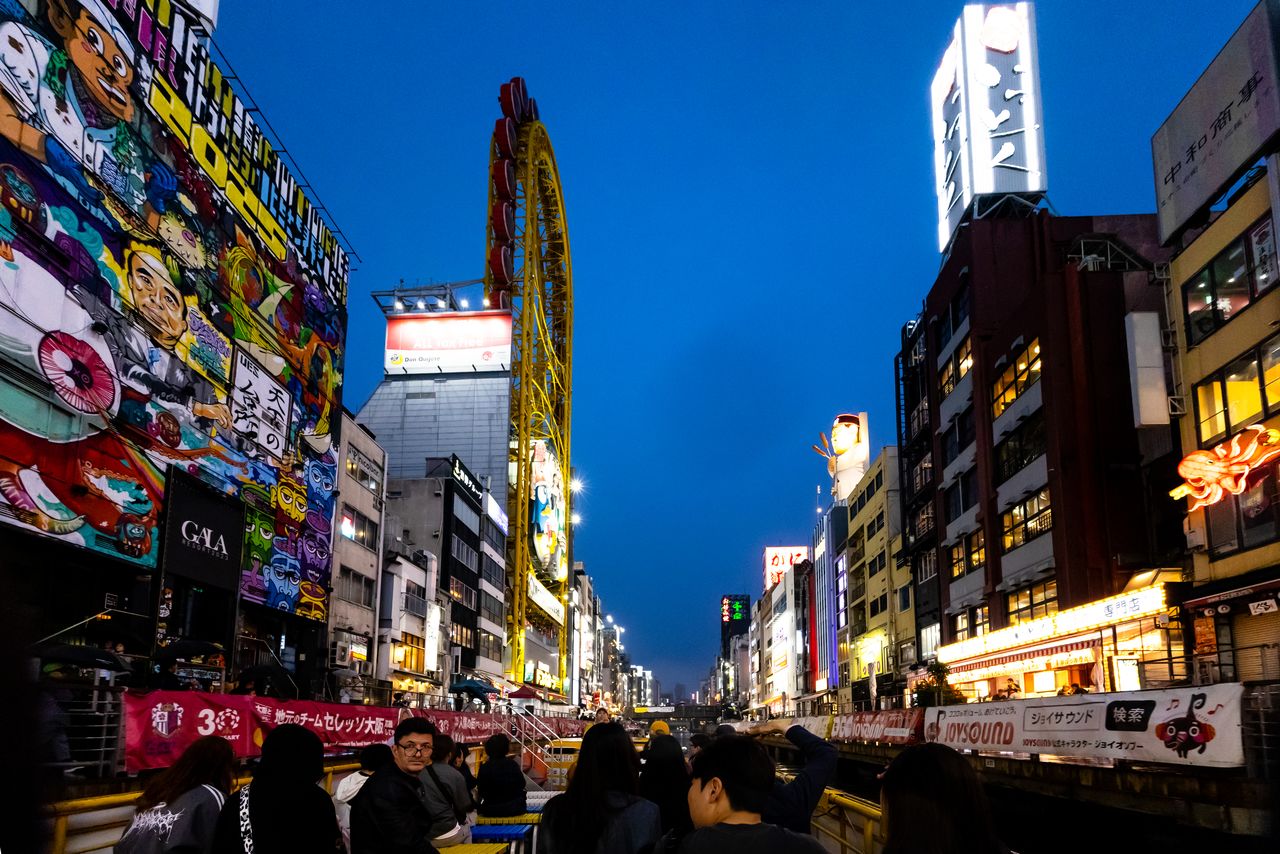
At night, the colorful lights create a special ambiance. (© Nippon.com)
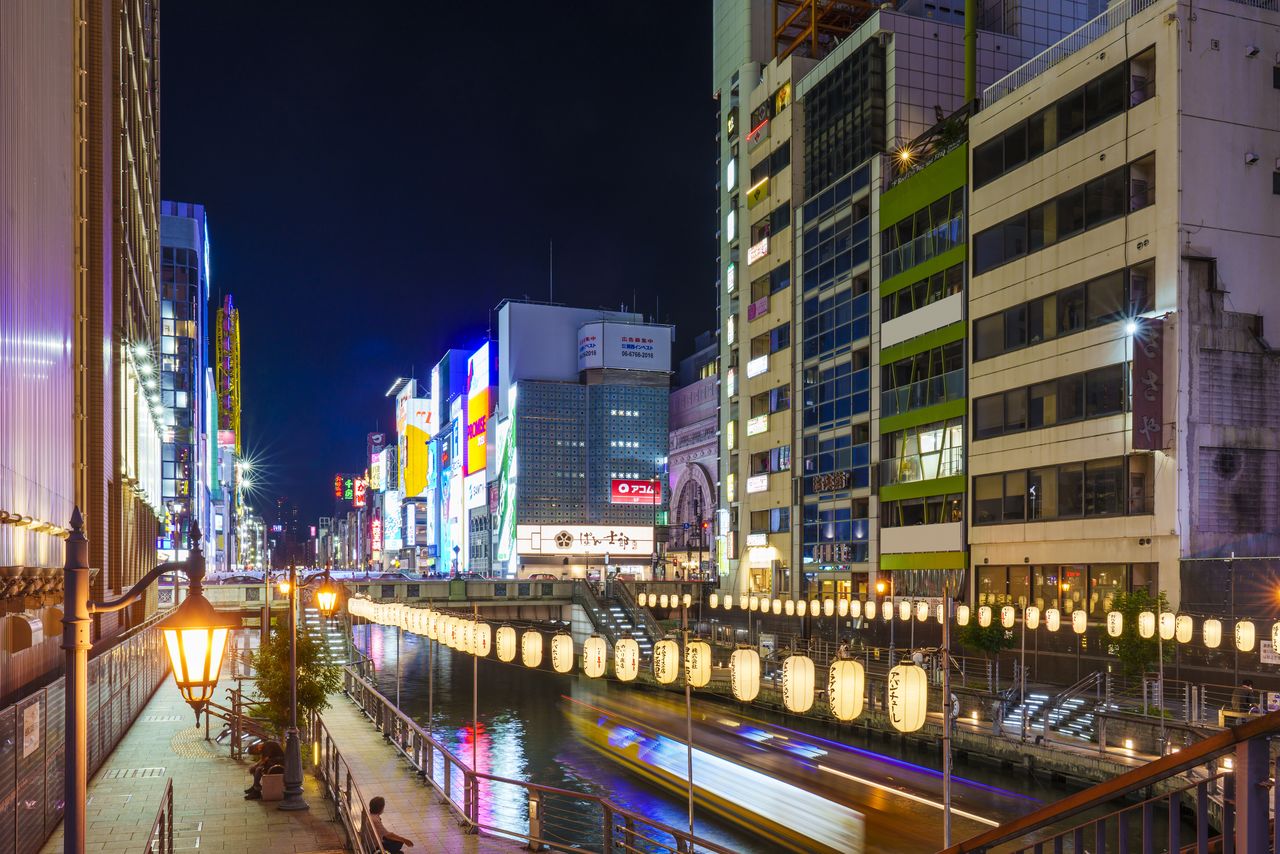
During summer, the canal is lined with 1,300 paper lanterns. (© Pixta)
The Revival of the “Venice of the East”
Although the Dōtonbori banks are now teeming with tourists, from Japan’s postwar high economic growth period through the early twenty-first century, the water was badly polluted with household and factory wastewater. When the Osaka-based Hanshin Tigers clinched the Central League pennant in 2003, elated baseball fans were seen jumping into the canal, to the horror of many locals.
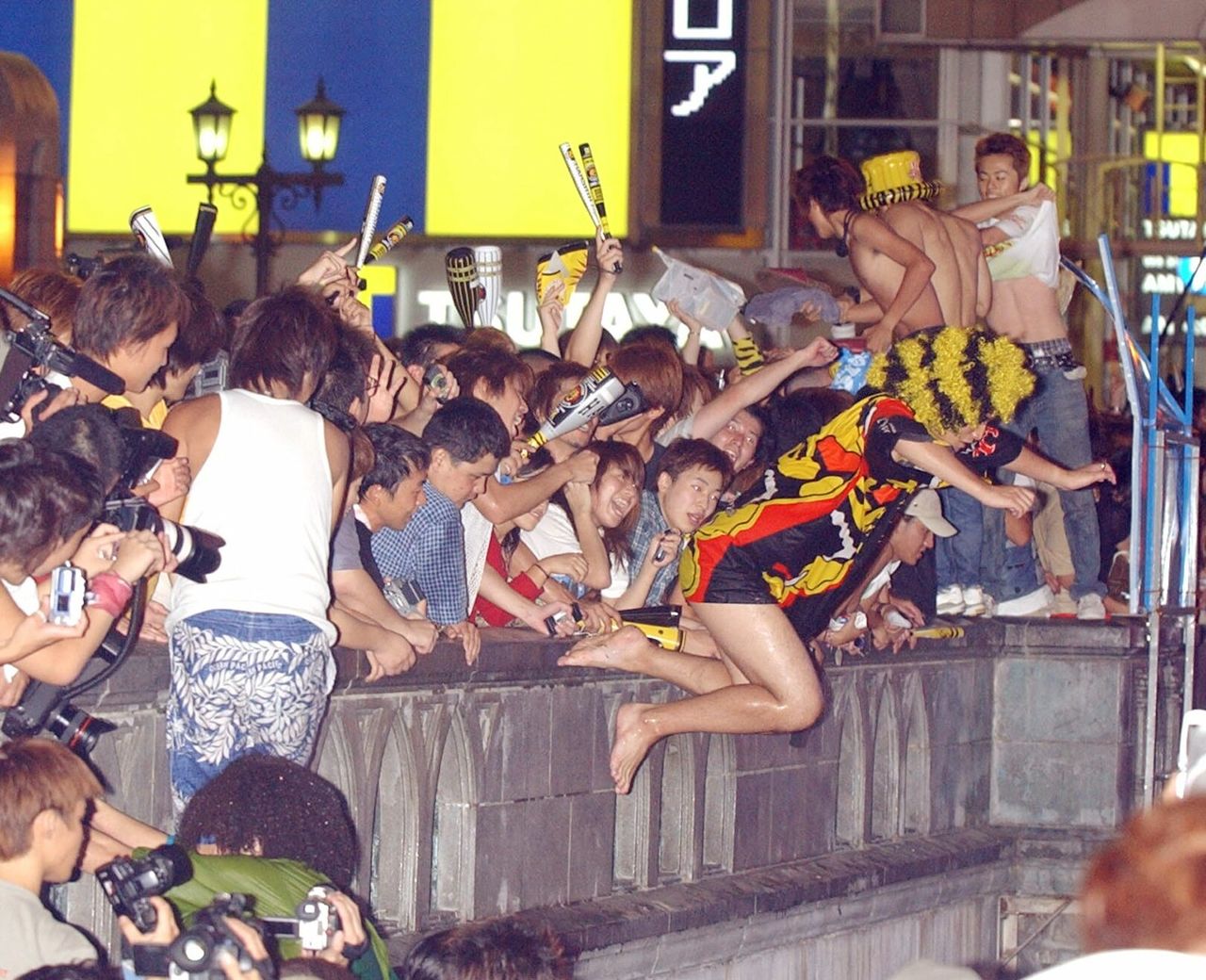
An estimated 5,300 Hanshin Tigers fans did the “Dōtonbori Dive” to commemorate their team’s victory on September 15, 2003, after the team won the Central League championship. (© Jiji)
Around the same time, the Osaka Metropolitan Government began working to clean up the water with the idea of reviving Osaka’s appeal as the former “Venice of the East.” Sluice gates were constructed up and downstream, which are opened and closed with the tides to introduce clean water from the Ōgawa (formerly the Yodo River). Measures were taken to stop the release of sewage into the canal, which achieved a clear improvement to the water quality. Sweetfish now live in the canal, and the Japanese eel, an endangered species, have also been seen.
Control of the water level with the sluice gates also enabled the operation of cruise boats. The Tonbori River Cruise, launched in 2005, provides an activity for water lovers and has come to symbolize the revival of the canal. Visitors to Osaka can now enjoy the culinary delights of “Japan’s Kitchen” and experience the thrill of its waterways.

The guide even plays the trumpet on special occasions! (© Nippon.com)
For details, visit the official Tombori River Cruise website.
(Originally published in Japanese. Research and text by Nippon.com.)
